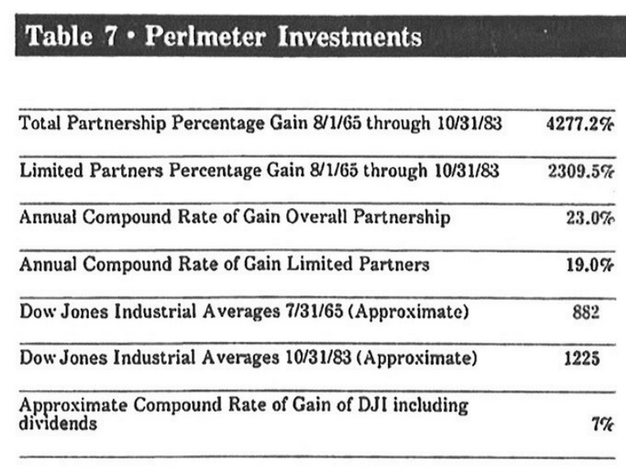“Table 7 is the record of Stan Perlmeter. Stan was a liberal arts major at the University of Michigan who was a partner in the advertising agency of Bozell & Jacobs. We happened to be in the same building in Omaha. In 1965 he figured out I had a better business than he did, so he left advertising. Again, it took five minutes for Stan to embrace the value approach…"-- Warren Buffett's introduction to Stan Perlmeter in his essay: The Superinvestors of Graham-and-Doddsville.
This is the sixth and final part of a six part series on Warren Buffett's essay, The Superinvestors of Graham-and-Doddsville. You can find links to the rest of the series below.
- The Superinvestors of Graham-and-Doddsville: Walter Schloss
- The Superinvestors of Graham-and-Doddsville: Tweedy, Browne
- The Superinvestors of Graham-and-Doddsville: Bill Ruane
- The Superinvestors of Graham-and-Doddsville: Charlie Munger
- The Superinvestors of Graham-and-Doddsville: Rick Guerin
Buffett's essay was a homage to the value investing philosophy of Benjamin Graham. It referenced seven disciples of deep value investing who went on to become some of the greatest investors of all time. In sixth place is Stan Perlmeter.
Stan Perlmeter: Value above all else
Just like Walter Schloss, Bill Ruane, Charlie Munger and Rick Guerin, Stan Perlmeter was a value investor and deep value was his specialty.
Perlmeter did not own what Bill Ruane owned; he did not own what Schloss owned, and he did not own what Guerin owned. In fact, none of these 'Superinvestors' ever found themselves making the same investments, they all found value in their own areas of competence. And Perlmeter didn't care much for anything else apart from deep value.
Every time Perlmeter brought a stock it was because he was getting more for his money than he was paying. In other words, he was buying $1 for less than $1 -- the underlying principle of deep value investing.
Perlmeter wasn't concerned about quarterly earnings projections or even next year's earnings projections. He didn't care which Wall Street brokers had a buy recommendation on the stock or a sell recommendation. He wasn't interested in price momentum, volume, or anything. He was simply asking: what is the business worth?
When the business was trading at a significant discount to what Perlmeter thought it was worth, he would buy. The results speak for themselves.

What happened to Stan?
Unfortunately, just like Rick…

.png)


